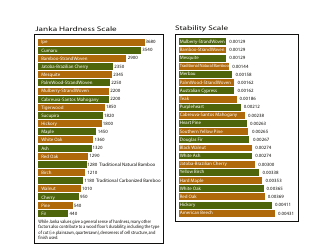Updated and Extended Mohs Mineral Hardness Scale Chart
The Updated and Extended Mohs Mineral Hardness Scale Chart is used for determining the relative hardness of minerals. It helps in comparing the resistance of minerals to scratching and is often used in geology and materials science.
The updated and extended Mohs Mineral Hardness Scale chart is typically filed and published by the organization or institution responsible for compiling and researching mineral hardness, such as the Gemological Institute of America (GIA), mineralogy departments at universities, or geological research organizations.
FAQ
Q: What is the Mohs Mineral Hardness Scale?
A: The Mohs Mineral Hardness Scale is a chart that ranks minerals based on their hardness level.
Q: What is hardness in terms of minerals?
A: Hardness refers to a mineral's resistance to scratching or abrasion.
Q: Who developed the Mohs Mineral Hardness Scale?
A: The Mohs Mineral Hardness Scale was developed by Friedrich Mohs, a German mineralogist, in 1812.
Q: What is the highest value on the Mohs Mineral Hardness Scale?
A: The highest value on the Mohs Mineral Hardness Scale is 10, which is assigned to diamond.
Q: What is the lowest value on the Mohs Mineral Hardness Scale?
A: The lowest value on the Mohs Mineral Hardness Scale is 1, which is assigned to talc.
Q: What are some common minerals and their hardness ranking on the Mohs scale?
A: Some common minerals and their hardness ranking on the Mohs scale include: talc (1), gypsum (2), calcite (3), fluorite (4), apatite (5), feldspar (6), quartz (7), topaz (8), corundum (9), and diamond (10).
Q: Why is the Mohs Mineral Hardness Scale important?
A: The Mohs Mineral Hardness Scale is important because it helps identify minerals and determine their durability and potential uses in various industries such as construction, jewelry making, and manufacturing.
Q: What is the advantage of using the Mohs Mineral Hardness Scale?
A: The advantage of using the Mohs Mineral Hardness Scale is that it provides a quick and easy method to compare and classify minerals based on their hardness level.
Q: Can the Mohs Mineral Hardness Scale be used to test all minerals?
A: No, the Mohs Mineral Hardness Scale is not suitable for testing all minerals, especially those with hardness levels above 10 or below 1.





